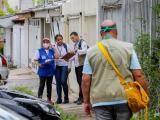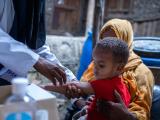From California's wildfires to emerging measles outbreaks in New York and New Jersey, the United States saw economic damages exceeding $91 billion for health security events in 2018.
And though more states are prepared to face such events, progress may soon be outpaced by environmental disasters and more emerging infectious disease threats, according to the 2019 National Health Security Preparedness Index published by the Robert Wood Johnson Foundation (RWJF).
For the sixth year in a row, the RWJF ranked states on their abilities to meet challenges posed by a wide-range of hazardous events. The snapshot includes 129 measures grouped into six categories: surveillance, community planning and engagement, information management, healthcare delivery, countermeasure management, and environmental and occupational health.
"The good news is we are seeing upward momentum in activities and protections on the index, it's moving on the right direction," said Glen Mays, PhD, MPH, who leads a research team from the University of Kentucky that worked on the index.
"But the bad news is we are often seeing more geographic differences in levels of health security. There’s more stratification and levels of unevenness." May has authored the index for the past 4 years.
Healthcare delivery systems lag
The national preparedness index score was 6.7 out of 10 in 2018, a 3.1% improvement over the prior year, and an 11.7% improvement since 2013. But at this pace, the United States will require another decade to achieve a strong health security level of at least a 9.0.
Mays said certain pockets of the country fall far behind in their index scores, with a gap of 25% in index values between the highest and lowest states in 2018. A total of 18 states experienced stagnant or declining levels of health security between 2017 and 2018, the report said.
"The south-central states from Mississippi to New Mexico, and Pacific Coast states, including Nevada and California, are below average," said Mays, adding it was doubly concerning given the size and population of California.
Though underperformance was not uniform, Mays said there was a persistent problem with healthcare delivery systems—access to high-quality medical services during and after emergencies—including a lack of preparedness in hospitals.
Environmental health activities grow
Mays said states demonstrated an overall focus on environmental health security improvements, which is key as climate change is predicted to create more extreme weather events. More states are putting in place climate adaptation plans and monitoring water supplies.
States also showed more countermeasure preparedness activities, and an increase in information systems.
Some states or regions saw dramatic improvements. The largest strides were made by the District of Columbia, which had a 7.3% gain on the index. Mays said Nebraska also made large gains in surveillance.
The report concludes with several recommendations, including a renewed focus on the 18 states with declining index scores, and identifying states' fiscal goals for health security.
"Closing current gaps and inequities in health security will require new and more coordinated actions by government and the private sector, particularly given the likelihood of continued growth in the frequency and intensity of hazardous events," the report said.
See also
May 8 RWJF Preparedness Index



















